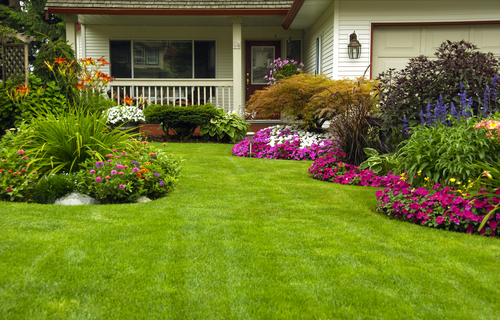Posts Tagged landscape
Kinds and Uses of Fertilizer
Are you a gardening enthusiast or local farmer? Well if you are you most likely do all in your power to create and maintain a healthy environment for your blooms or crops. There are some cases though that crops or plants don’t grow to their full potential and one of the main reasons for this is poor soil quality. There are a few techniques that can be applied to rectify the issue of poor soil quality one of which is the use of fertilizer.

Fertilizers In Detail
Fertilizer can come in several forms and is an excellent way to enrich your soil and promote plant growth. Before using fertilizer with your plants or crops it would be a good idea to educate yourself on the different types of fertilizers and why they are used. It would also be best to read labels to ensure that applications are accurately made when using fertilizer. Here is a list of some of the most commonly used fertilizers in gardens or on farms. These include:
- Organic Fertilizer – These consist of naturally bio-degradable materials and mostly come in the form of animal manure but others can also contain compost, seaweed, peat moss, mineral deposits and other ingredients from nature. This type of fertilizer is great for gardens and crops as it not only restores the overall soil quality but improves the long term health of soil.
- Inorganic Fertilizer – Again this type of fertilizer can come in several forms including liquid, powdered or granular form. These fertilizers are generally used to treat industrial fields as they are cheaper and produced on a large scale. They also allow plants to carry nutrients from the soil easily since they are not as bulky as organic fertilizers.
- Chemical Nitrogenous Fertilizer – This type of fertilizer usually comes in granular form and has a high content of nitrogen. Once applied to the soil it is converted to ammonia and dissolves when it rains where the nutrients then travel through the ground and into the plant’s roots.
- Phosphate Fertilizer – This is mainly applied to soils that are acidic and is contained in both organic and synthetic forms. This type is usually applied during the sowing season.
- Potassium fertilizer – This is normally utilized to help improve plants thriving in sandy soil. It works to increase the potassium content where it’s inadequate. Potassium fertilizer can come in the form of sulfate of potash and muriate of potash. Sulfate of potash is made by treating potassium chloride with magnesium sulfate and muriate of potash uses a crystallized form of potash to fertilize plants which is absorbed at the surface level of the ground.
Now that persons are a bit more educated on the different types of fertilizers and their uses they should easily be able to determine how and what type of fertilizer they should use to achieve the best results with their plants or crops. Contact us for more information.
Ideas On How To Save Water For Gardening
Gardening is a recreational activity for many Californians. Creating and maintaining a lovely garden is the dream of every gardener. With seasonal plants, exotic varieties and breathtaking blooms nurturing and maintaining a garden can sometimes be pretty challenging task.
There are several activities and responsibilities that need to be considered and employed in order for a garden to be properly maintained and nurtured. One of these main responsibilities would most definitely include the provision of water to trees, plants and flowers.
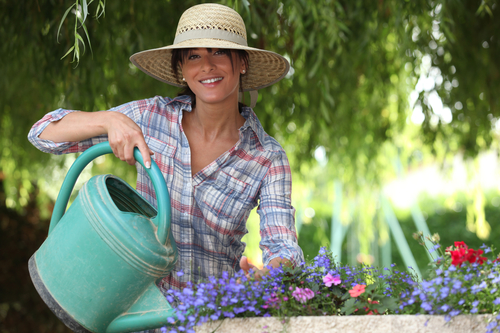
Successful Gardening
When it comes to supplying a garden with water most people have the perception that all is well so long as plants and flowers get watered however this may not exactly be true as there are many factors that can affect the way trees, plants and flowers receive water.
Since this is the case trees, plants and flowers can be affected in such a way that they don’t obtain sufficient nourishment to grow or bloom as they should. Even though this may be so giving trees, plants or flowers an excessive supply of water can be harmful to them and costly for you.
So in order to eliminate most of the issues that are encountered in gardens as it relates to watering plants incorrectly here are a few insightful tips that gardeners could utilize to reduce costs and water usage in gardens.
One very resourceful way to reduce the amount of water used in gardens is to attend and maintain soil. Adding mulch and organic matter to soil are both excellent ways to reduce the excessive use of water in gardens. They both help to improve water retention and soil structure so that plants don’t constantly need to be watered.
Disproportionately watering gardens tends to not only be a wasteful practice but also causes gardeners to do more work than is actually necessary. So to rectify this issue simply check to see if plants, trees or flowers do or do not require water.
To do this gardeners should take a spade and push it deep into the soil if it’s damp things are ok but if it’s dry then it’s definitely time to water. It is important to remember if you have clay soil it might feel damp whether it’s irrigated or not and sandy soil can feel dry even if it contains water. So in these cases gardeners should watch plants for when they start to show signs of water stress.
Knowing the best time to water plants is extremely important and by utilizing certain tools and techniques such as automated irrigation, sprinkler systems, watering cans or hoses water can not only be adequately supplied to plants at the required time but their use can minimize the amount of time spent and the amount of water used watering gardens.
In addition another way to supply water to plants and reduce usage would be to collect rain water. Place an empty receptacle at the end of drains to collect rain water whenever there is a shower of rain.
With this method people could reduce the usage of water in their gardens by 50% helping them to save money and at the same time still being able to care for their gardens.
These helpful tips can easily help gardeners to save time and money but most importantly it can help them to save a very, precious resource. Contact us for more information.
Preserve The Ecosystem With Gorgeous Landscape Designs
Over time scientists, environmentalists and activists have all pleaded with persons around the globe to take responsible measures when it comes to the safety and preservation of our environment. You can create landscape designs that enhance your surroundings and that are environmentally friendly as well.
Ecofriendly Landscape Designs
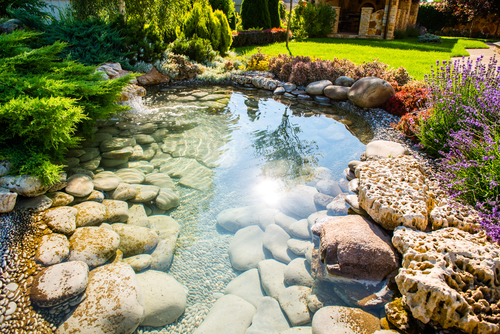
In order to achieve this persons around the world must take action by positively inspiring others to take care of their surroundings along with improving environmental aspects of society, nature and its resources. If these positive actions are consistently promoted and executed even to the tiniest degree they result in a major impact on the environment.
Having a wholesome and positive impact on the environment can be achieved in many ways some of which include recycling and reusing products and properly disposing of garbage and hazardous waste.
Another dynamic and eco-friendly solution would be for persons to preserve ecosystems by using impressive landscape designs. The birds, butterflies, squirrels and many other small creatures all call our gardens or outside surroundings their homes.
These delightful creatures astonish, entertain and offer us a tranquil ambience in and around our homes and surroundings. The individual role of each creature also plays a vital role to the environment and our ecosystem so it is very important that we help to attract and preserve all the elements that influence and affect their habitats.
One suggestion that has proven to be very effective as it relates to preserving the ecosystem would be to grow plants that attract wildlife. By planting the right flowers, trees, shrubs and vines in our gardens and backyards we will be helping to nurture and protect the ecosystems that exists all around our homes and communities.
Using plants and trees that occur naturally in the area you live provides an excellent source of food for birds, insects and other wildlife. Nectar, seeds and tasty fruits are all on the menu however pollen and nectar are among the most common food sources for insects and small birds so by utilizing pollen rich plants like wildflowers and other old fashioned varieties along with annuals and perennials we offer food, nectar and pollen to birds and insects throughout the growing season.
It may not seem like it but by planting a variety of trees and plants we also offer much needed shelter and protection to wildlife to rear their young and hide from predators. Utilizing tips like letting a part of your lawn grown wild to offer sanctuary to ground nesting bees or allowing a dead, hollowed, tree to stand to create nooks for birds and butterflies.
Bird baths, nesting boxes and small ponds all help to promote and increase the wildlife population around us which results in thriving ecosystems. Having readily access to water is very crucial to wildlife survival so again by installing a water gardens or a catch basins for rain can certainly help to provide a constant stream of water for wildlife in our surroundings.
In order to make this a reality as well as to get and stay on a path that encourages the preservation of the environment and it’s many ecosystems the goal would be for each individual to take responsibility and perform positive acts daily that ultimately improve, enhance and protect the environment as a whole. Contact us for more information.
Have A Narrow Walkway? Try These Gardening Tips
There are quite a few gardeners out there who have an extensive knowledge of plants and landscaping in which they use to come up with some very impressive and unique ideas for their gardens. However there are still many amateur gardeners or homeowners out there who love to beautify their properties and are excited about doing new things but lack gardening knowledge.
Try These Gardening Ideas
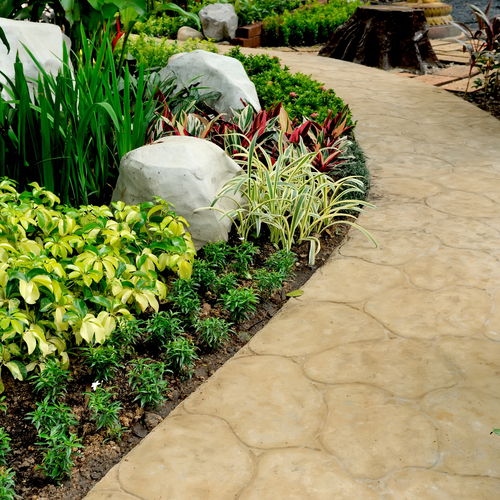
This might be just what you are looking for as this article offers some pretty insightful and dynamic tips that people can utilize to create gorgeous landscape designs while adding ambience and character to their surroundings.
Before focusing on choice of plants a great idea might be to add an outstanding feature to accessorize the garden and surrounding areas of the home. Installing an ornamental gate at the entrance of your walkway is a great start. This will immediately make the walkway feel more private for you and still feel inviting to visitors.
Once this is done establishing a focal point in the garden or surroundings would be the next step. Using an attractive tree, bird bath or bench brimmed with brightly colored plants can serve to draw the eye beyond the walkway while enhancing the appearance of the entire garden.
If the walkway or pavement needs repair it would be best to ensure that this is done in the initial stages. You should not wait until after you’ve planted the flanking beds mainly because this is exactly where you or your contractor will need to tread while working on the path or pavement. So to avoid the destruction of garden beds make sure you do any necessary repairs before proceeding to that stage.
Once you have secured and established the basic groundwork for your garden you want to make sure you choose the correct plants trees and flowers. If you reside in an urban area the best plants to use are low-growing perennials. Besides their beautiful shades most of them die in the winter or can be cut to the ground. This makes it easier for gardeners when dealing with the snow as well and when it’s time to regrow the next growing season.
- The Ajuga, lysimachia, and creeping phlox species all spread like a carpet and Ajuga reptans ‘Catlin’s Giant’ has burgundy-bronze leaves that supply color to surroundings long after its deep-blue flower spikes fade in late spring.
- The Lysimachia nummularia species possesses a delicate, looking foliage that covers ground quickly and softens the edges of a path.
To add more color and variety consider using the Phlox stolonifera species which is popular for the graceful flower clusters it sends up on 8-inch stems in late spring. The wild form is usually bluish but there are also blue, white, and pink varieties.
To give an added touch to your paths or walkways using slightly taller plants would be best. They won’t bend into the way of people using the walkway and at the same time they add a contrasting feature to the surroundings. Be sure though to avoid using plants more than 8 inches tall to prevent overgrowth in the walkway along with overshadowing other features within the garden.
Ensuring that a safe and nurturing environment is maintained throughout, gardens and surroundings should be the priority of every gardener. If in difficulty or you may be lost in some areas hiring a professional would be the best course of action, but if you are just looking for tips to improve and enhance there are a network of informative and effective tips available online that give tremendous insight into how those ideas can be achieved. Contact us for more information.
Spring Landscaping Ideas For The Perfect Garden
Landscaping during spring can give you a luxurious and glamorous looking garden. Spring is classified as one of four temporal seasons experienced here on our planet which occurs just after the winter and just before the summer. When most people refer to spring or ‘springtime’, to them it becomes synonymous with ideas of rebirth, rejuvenation, renewal, resurrection and regrowth.
Nevertheless due to the cold conditions brought on by the winter season it is highly likely that most plants, trees and shrubs will suffer substantial damage during the early part of the year. If you have a garden in and around your surrounding property protecting your plants from any damage or destruction should always be a major concern.
Landscaping Your Property During Spring
Since the springtime is seen as a time of rebirth and regrowth there are some additional tips that gardeners can employ to ensure that they maintain a safe and nurturing environment throughout their gardens.
Due to the harsh, cold, conditions of winter debris inevitably accumulates in grass and on lawns. Since lawns require no more than ½ an inch of buildup gardeners should rake away any excess debris from their grass or lawns. This also helps to control thatch on the lawn and offers an opportunity to look for matted areas. Raking will also allow the lawn a chance to breathe again.
Over time lawns can become compacted especially with a lot of traffic or excess debris so to help with this it is highly recommended that gardeners aerate lawns in order to avoid this. If you are not sure how to aerate your lawn you can always contact a professional landscaping service to come and assist with this.
Apart from some lawns having excess debris some can be found to have a lot of patches and bare areas. Overseeding is one method gardeners can utilize and refers to the applications of seeds to fill bare or patchy spaces in lawns . Although this alternative is generally recommended for the fall season it can be done in the spring if absolutely necessary.
If you have a sprinkler system the springtime would be the ideal time to inspect it for any damages and if any to perform repairs. However if all is well and no issues are detected this would also be the perfect time to have your system reactivated.
The spring is also a good time to apply some pre-emergent weed control to plants. This serves significantly control weeds in gardens as well as to act as a barrier against future weed seedlings. Gardeners should always keep in mind that this should be done before applying any organic fertilizers and to ensure effective weed control applications should be done on a continued basis in and through the summer.
Mulching is another effective system that gardeners ought to practice during spring as it offers several benefits to existing or emerging flowers, plants and trees in gardens. Placing mulch in flowerbeds and around plants and trees helps them retain moisture during the early spring months. It also helps to reduce the temperature of plant roots and insulates them in event of an unexpected freeze during the spring.
It is only natural that all gardeners, landscapers and farmers alike all want their gardens or crops to thrive and be protected so by utilizing a network of useful informative and effective tips available online or by hiring professional services those goals can ultimately be achieved. Contact us for more information.
Winter Plants – Part 1
Nature provides numerous varieties of winter plants that flourish in cold temperatures. There are winter plants that will flourish even in snowfall and there are others that can mirror their vibrant colors from the icicles hanging from your home.
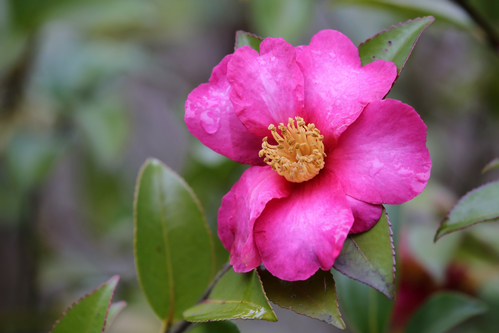
Winter Plants For A Breath Taking Scenery
One of the well-liked winter plants is the Camellia. This evergreen flourish from fall to early spring. With its brightly colored rose like flowers this plant provides a breathtaking difference to a sombre winter scenery. Camellia should be sowed in an area that have some sun but not too much
The winter-berry which is related to the holly and loses its leaves in fall is a great plant to have this time of year. You and your loved ones can enjoy the vibrant red berries that come into their own. The berries attract the birds during this time which is a sight to see and the birds will be happy for your blessings as well. You must plant the seeds during the fall in a small frame, then you can transplant them to fertile damp soil in the spring. However it is a slow growing winter plant, with its germination taking about 2 to 3 years.
Paper Maple has ringlets of copper colored bark flaking off all over and this constructs a pleasurable image both on the plant and while the leaves lay on the ground in all their splendor. During fall the green leaves change into a fascinating cinnamon shade and the plant grows in sunlight perfectly.
Red Twig Dogwood is an old-time golden boy as the color of the plant is sustained all year round. The boldness of the plant’s color relies on the sunlight it obtains. This is another incredible addition to consider in your garden during winter.
Firethorn is lasting and it has an appealing view all year. It has little bunches of glistening white flowers in spring and vibrant shiny green leaves the rest of the year. The little pea like berries can be either orange or yellow in color and these can survive until long after fall is over. The seeds should be sowed in the fall in a cold frame then transplanted to properly drained fertile earth in the spring.
If you want the best in lawn maintenance and advice contact us as DK landscaping. Our team of experts will help you give your garden the nutrients and the proper care it needs to survive and remain lush.
Winter Gardening: Growing Vegetables
Though snow may lie deep in drifts outside your window, this is the ideal time to get started with this year’s winter gardening program. There are many garden tasks that can be done now, while there is ample time to plan, research, and begin gathering materials. Some gardeners consider these winter chores to be the most enjoyable parts of gardening. Tasks can be accomplished comfortably from your armchair as the garden takes shape in your imagination, where it is always lush, abundant, and of course free of weeds.
Winter Gardening Advice
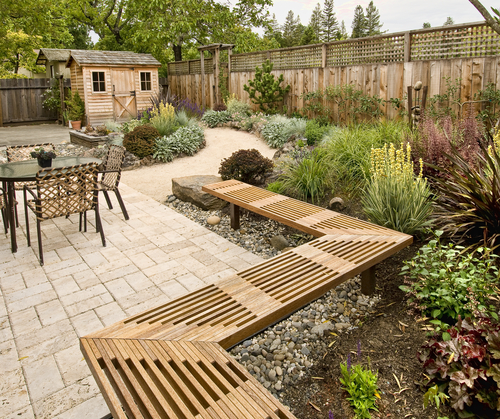
In midwinter, before the growing season gets underway you have time to organize yourself so you can accomplish everything you need to do from now until your garden is planted. This is the time to make rough plans which can be refined and modified as you go along. So while the birds twitter around their feeders and the forecast is for more snow, grab a stack of seed catalogs, some paper, and a pencil, and settle into a comfortable chair and plan your dream garden.
It is helpful at this early stage to make some key decisions about your garden. You need to compile the list of vegetables that you plan to grow. You must also decide which vegetables you will start from seed inside, which you’ll sow as seed directly into your garden, and which you’ll purchase as seedlings from a nursery. Additionally, you should list supplies you’ll need for cowing seedlings indoors, and begin to gather these items. It is also helpful to start composing a rough sketch of your garden layout. Finally, you should draw up a calendar of garden tasks to do to help you stay on schedule as the season progresses.
Start by thinking about which vegetables you’d like to grow this year. If you’ve had a vegetable garden before you should consider what grew well for you before and what failed. Certainly include any of your old favorites, those vegetables that are easy to grow and can be relied upon to produce abundantly. There may be new vegetables you’d like to try or new varieties of your old favorites that you would like to experiment with. Consider quantity too. Did you have as much as you wanted of everything last year? Was there something that you could not give away fast enough such as all those zucchinis? Perhaps there was something which you enjoyed eating but took up too much space?
If you haven’t grown vegetables before, a good way to start putting a list together is simply to consider what your family enjoys eating. You’ll want to think about vegetables that you’d like to provide fresh from your garden over the summer, as well as considering any vegetables that you’d like to can, freeze, or store for fall and winter eating. If this is your first vegetable garden it’s wise to start small. A small kitchen garden of ten or twenty square feet planted with a handful of vegetables and herbs will keep you fairly busy with garden tasks, supplement your family’s food, and provide you with good gardening experience to go forward.
Don’t forget to take your growing zone into consideration when choosing vegetables to grow. If you are not sure which zone you live in, you can readily find out in almost any gardening book or online. Do some research on gardening in your region to find out how long your growing season is, when planting time starts, and what types of vegetables do best where you live. Contact us for more information.
Lawn Care In the Fall
Lawn care is necessary if you are to keep your garden looking its best. At the end of a busy and fun filled summer, your lawn may begin to demonstrate symptoms of wear and tear. Early autumn is an excellent time to maintain the damage and make sure that your lawn would be in good fettle for the upcoming year.
Lawn Care Guidelines
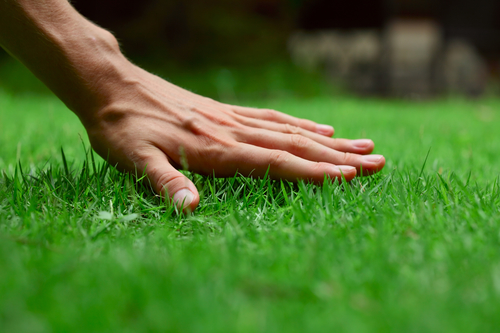
Before raking debris, you should kill any moss with a lawn moss herbicide. For larger lawns, you can use a motorized scarifier. Ensure that you use a spring-tined rake. Scraping your lawn enhances its look and adds vigor to the lawn. Establish air channels in dense turf by placing a border fork in the soil. This action will draw plugs out of the soil.
After scraping and aerating your turf, fill the holes with a top dressing. You can purchase your top dressing from garden or hardware stores. It is such an affordable and simple technique that you can also make your own top dressing.
After all the fun times and frequent use during the summer, your lawn may exhibit signs of degeneration. Therefore, early autumn is a superb time to maintain any devastation. Make sure that your lawn is in excellent health for next year.
With the use of gloves, put some granular autumn fertilizer evenly over noticeable squares. If no rain falls within three days of applying the fertilizer, then wet it. In the initial stage of autumn, your soil would be warm enough and damp to plant grass seed. Additionally, scatter seed to correspond with your type of turf. Apply this at half of the suggested rate for contemporary turfs. This helps to enhance any depilated spots.
If you want to improve on the way you take care of your lawn then contact DK Landscaping. We are the experts in plant and lawn care. We can help you create the right conditions for a healthy and much improved lawn and garden.
How to Grow Boxwood Shrubs
Boxwood is an evergreen plant that grows in small, dense hedges. It doesn’t flower noticeably, but its rich green color makes it good for foliage cover. They work well for borders or near entryways. However, it’s a slow-growing plant, so don’t expect it to be impressive overnight.
A Few Boxwood Facts
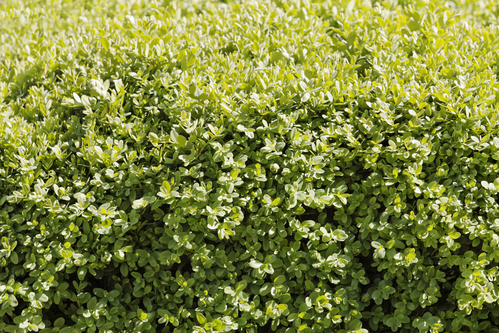
As with all plants, be sure you’re placing your boxwood shrubs well. Boxwood typically does best in partial or full sun, so don’t plant it on the shady side of a house. Boxwood shrubs prefer well-drained soil, although it’s not very picky about pH. In very hot climates, try to plant your shrubs so they’ll receive some shade during the heat of the day, and do your best to water them semi-regularly so they don’t wilt. Try to remember your climate will impact the health of your boxwood.
Boxwood is generally hardy, but it has a few pests to watch out for. The most notable is the boxwood leaf miner, which causes the leaves to turn yellow. You can spray the leaves with insecticide to kill the plant, or try for an organic option such as neem oil.
You may also notice phytophthora root rot, a fungal infection. The fungus kills the roots, so the plant has a harder time taking in moisture and nutrients, and eventually begins to die back. To prevent this, make sure you’re not overwatering your boxwood shrubs, and ensure the soil is draining well.
Winter bronzing is a phenomenon where a boxwood’s leaves turn orange in the cold. This isn’t fatal to the plant, but many gardeners find it unpleasant to have. Winter bronzing is often caused by wind exposure.
To avoid winter bronzing, try to plant your boxwood shrubs such that they’re sheltered from freezing winter winds. If your ground isn’t frozen, give your shrubs a deep watering, especially if you live in a region with dry winters. You may also consider using a slow-release fertilizer in spring and fall. If your boxwoods are still bronzing, try spraying the leaves with an anti-desiccant, to keep their moisture in.
Though it takes dedication to reach its full potential, boxwood is a beautiful foliage plant that’s a staple of many gardens. If you plan to install boxwood shrubs around your home, get in touch with us and we’ll walk you through the process. Contact us at DK Landscaping for more gardening tips and advice.
Time To Mulch
There are various kinds of organic mulches used in garden maintenance. They act as fertilizers giving your soil the nutrients and conditions needed for sustainable growth. The State of California has policies in place that govern the production of mulch. Take a look at the various kinds of mulches that are highly recommended:
Types Of Mulches
Newspaper is becoming more widespread as mulch. Shredded newspaper has been used to maintain a damp environment for plants during shipping. This technique has been used on land as well. The way this all works is because layers of newspaper have excellent water retaining capabilities. They also help to control weeds and manage soil temperatures. This is an excellent benefit.
Shredded Leaves can be utilized as mulch any and everywhere in your garden. This is one of the most natural forms of mulch. Many gardens have flourished by using this technique.
Grass Clippings is used in the isolated areas of your garden where you want to restrain weeds. Grass clippings also are prone to mass down the water causing it not to pass through.
As part of your gardening maintenance plan you should utilize a mulching mower and leave back the clippings on the lawn to supply added fertility to your soil. Nonetheless, if you place your grass clippings in bags do not discard of them, unless you have utilized weed killer or some other pesticide on your lawn. You should also know that synthetic lawn care items can be harmful to some flowers, so you may not want to use them in your garden. Grass clippings that are not treated should be placed in your compost bin or utilize as mulch for open areas are not yet planted.
Some gardeners hate to see leaves in their garden, and that’s a fact. Leaves really aren’t suitable for a formal garden. But if you cover your garden with the leaf mulch it tend to fusion into the garden in no time. This way you can still have the beauty of your garden untarnished while giving it the advantages of having mulch added.
During rainy times, unshredded leaves may mass together and fight off the water. If the leaves are too wet to shred, they can still be used. If you are considering implementing this gardening improvement technique then seek an expert gardening service. Contact us the gardening experts for more sound advice and gardening maintenance.


